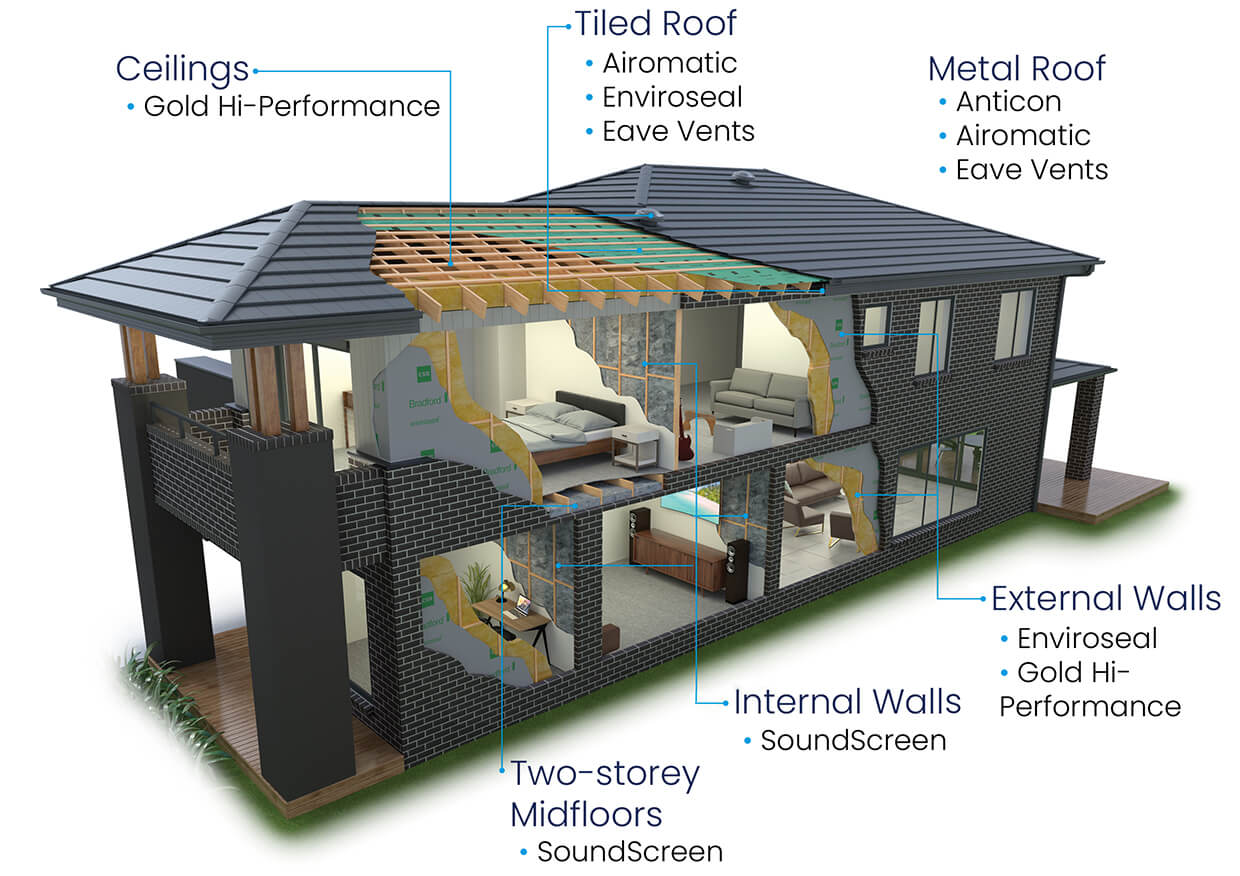Unlocking the Secrets of Energy-Efficient Home Insulation
In the pursuit of creating a comfortable and energy-efficient home, the importance of proper insulation cannot be overstated. This article explores the benefits of energy-efficient home insulation, delves into various insulation options, and provides insights on how you can optimize insulation to enhance your living space’s comfort and energy performance.
Understanding the Significance of Energy-Efficient Insulation
Energy-efficient home insulation acts as a thermal barrier, helping to maintain a consistent temperature within your home. In colder months, it prevents heat from escaping, while in warmer months, it prevents heat from penetrating your living space. This equilibrium not only enhances comfort but also reduces the strain on heating and cooling systems, contributing to lower energy bills.
The Benefits of a Well-Insulated Home
Investing in energy-efficient home insulation yields a multitude of benefits. Beyond energy cost savings, a well-insulated home provides improved indoor comfort by minimizing temperature variations. It also contributes to noise reduction, creating a quieter and more peaceful living environment. Additionally, proper insulation can enhance the overall value and marketability of your property.
Discover More about Energy-Efficient Home Insulation at joscorena.my.id
Explore a variety of energy-efficient insulation options and find expert guidance at joscorena.my.id. Discover the solutions that best suit your home’s needs and elevate its energy performance for a more comfortable living experience.
Types of Energy-Efficient Insulation
Several types of insulation materials cater to different areas of your home. Fiberglass, cellulose, foam board, and spray foam are common options, each with unique characteristics suited for specific applications. Understanding the properties of each material allows you to make informed decisions based on factors such as cost, thermal resistance, and environmental impact.
Attic Insulation: A Critical Component
The attic plays a crucial role in a home’s energy efficiency. Properly insulating the attic prevents warm air from escaping during colder months and minimizes heat gain during warmer months. Whether you choose batt insulation, blown-in insulation, or spray foam, ensuring your attic is well-insulated significantly impacts your home’s overall thermal performance.
Wall Insulation for Complete Thermal Control
Insulating exterior walls is essential for maintaining a consistent indoor temperature. Batt and roll insulation, as well as blown-in insulation, are commonly used for wall insulation projects. By addressing gaps and voids in the walls, you create a thermal barrier that reduces heat transfer, enhancing both energy efficiency and overall comfort.
Floor Insulation: Keeping Feet Warm and Bills Low
In homes with crawl spaces or raised foundations, floor insulation becomes paramount. Properly insulating floors not only keeps the living space above more comfortable but also prevents cold air from infiltrating, leading to energy savings. Options like fiberglass batts or rigid foam insulation are commonly used for floor insulation projects.
Optimize Your Home’s Comfort with Energy-Efficient Home Insulation
For a comprehensive guide on energy-efficient home insulation and expert advice on making the right choices for your home, visit joscorena.my.id. Take the first step towards a more comfortable and energy-efficient living space.
DIY Insulation Projects: Tips and Considerations
While some insulation projects may require professional assistance, there are also several DIY-friendly tasks you can undertake. Sealing gaps around windows and doors, adding weatherstripping, and applying insulating films can be effective, budget-friendly solutions to enhance your home’s insulation. Always prioritize safety and follow proper guidelines when engaging in DIY insulation projects.
The Future of Home Insulation: Green and Sustainable Options
As environmental awareness grows, so does the demand for green and sustainable insulation options. Materials such as recycled denim, sheep’s wool, and cellulose made from recycled paper offer eco-friendly alternatives. These options not only provide effective insulation but also contribute to reducing the environmental impact of insulation materials.
Conclusion: A Cozy, Efficient, and Sustainable Home
In conclusion, energy-efficient home insulation is a key factor in creating a cozy, efficient, and sustainable living space. By understanding the benefits of insulation, exploring different types, and considering DIY projects or sustainable options, you can optimize your home for comfort and energy savings. Visit joscorena.my.id to discover more about energy-efficient home insulation and embark on the journey to enhance your home’s thermal performance.

